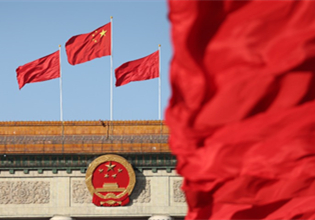Inner Mongolia makes great economic, social development achievements
The economic and social development achievements of North China's Inner Mongolia autonomous region in the past five years were revealed at the first plenary of the 14th Inner Mongolia Autonomous Regional People's Congress, which officially kicked off in its capital city on Jan 12.
During this five-year period, all 57 impoverished counties and 3,681 villages in the jurisdiction of Inner Mongolia improved their socio-economic circumstances, benefiting the 1.57 million poverty-stricken population and historically solving the problem of absolute poverty in the region.
The comprehensive economic strength of Inner Mongolia jumped sharply, with the GDP increasing from 1.5 trillion yuan ($213.98 billion) to 2.2 trillion yuan, and the per capita GDP increasing from 61,000 yuan to 92,000 yuan.
The total grain output in the region also jumped from 10th place in the country to the sixth place, and the output of milk, mutton, beef, cashmere and forage all ranked first in the country over the same period.
In the past five years, Inner Mongolia has produced more than 5.3 billion metric tons of coal and generated a total of 2.9 trillion kilowatt-hours of electricity. Its supply of coal and electricity ranked first in the country.
Meanwhile, great changes took place in the urban and rural landscapes of Inner Mongolia.
The urbanization rate of the region increased from 64.6 percent to nearly 69 percent. Rural revitalization was comprehensively promoted, and a pattern of differentiated and coordinated development in the eastern, central and western parts of the region took shape.
The highway mileage in Inner Mongolia increased by 17,000 kilometers, the main body of Hohhot’s new airport and the construction of 21 general airports were completed.
Moreover, in the past five years, the ecological environment in Inner Mongolia continued to improve.
The local government performed afforestation in an area of more than 37 million mu (2.46 million hectares), planted grass and greenery in an area of more than 120 million mu, and controlled desertification in an area of more than 54 million mu, ranking first in the country.



 Print
Print Mail
Mail





